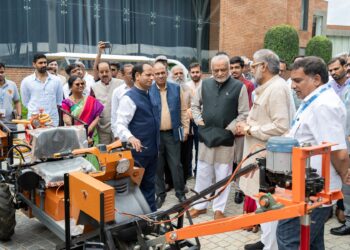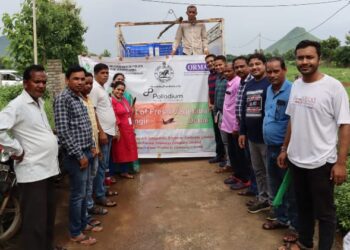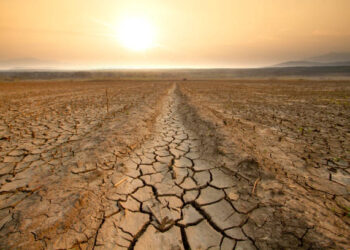The Afforestation Program Shows Significant Impact on Household Income and Green Cover
ITC Limited, in its annual report for the fiscal year 2022-23, highlighted the substantial contribution made by their Social Forestry initiative. The program has not only contributed to the enhancement of green cover across several states but has also been a significant source of income for rural households.
Greener Fields, Heavier Pockets
The Social Forestry program of ITC Limited witnessed an additional income of more than Rs. 45,000 per household through the plantation of Silver trees and Rs. 60,000 per household for Melia Dubia in Karnataka. The company reported that the initiative greened over 31,000 acres in the past year, spreading across 17 districts in 6 states. To date, the program has covered over 4.56 lakh acres in approximately 7,000 villages, impacting over 1.76 lakh poor households.
An Alliance of Social and Farm Forestry
Integral to the company’s Social Forestry initiative is the Agro-Forestry program. The program includes plantations on bunds, cumulatively extending to about 2 lakh acres. This ensures food, fodder, and wood security for the communities involved. Alongside, the company has also developed fast-growing, high yielding, and disease-resistant hybrid clones and saplings of eucalyptus pulpwood. These clones have been developed to grow under varying ecological conditions, thus building resilience and contributing to the increased income for the farming community.
Multiplying Benefits
ITC Limited’s Social and Farm Forestry initiative has led to the improvement in pulpwood and fuelwood availability in several states including Andhra Pradesh, Telangana, Karnataka, and Odisha. This program has not only generated employment for rural households but has also contributed meaningfully to the nation’s efforts to create additional carbon sinks for tackling climate change.
What is Social Forestry
Social forestry at ITC Limited is a program that aims to promote the planting and management of trees on degraded land, primarily in rural areas. The program has been implemented in a number of ways. ITC Limited has worked with local communities to plant trees, and has also provided technical assistance and training. The program has also been supported by the government.
Social forestry at ITC Limited is a successful example of how a company can contribute to the sustainable development of rural areas. The program has helped to improve the environment, provide for the needs of rural communities, and create employment opportunities.
The program has been successful in achieving its objectives. The trees planted under the program have helped to improve the environment by reducing soil erosion, improving water retention, and providing shade. The trees have also provided fuelwood and fodder for rural communities, and have created employment opportunities in rural areas.
The program has been implemented in a number of ways. ITC Limited has worked with local communities to plant trees, and has also provided technical assistance and training. The program has also been supported by the government.
Benefits of social forestry
Here are some of the benefits of social forestry:
- Improves the environment: Social forestry helps to improve the environment by increasing the green cover, which helps to reduce soil erosion, improve water retention, and provide shade.
- Provides fuelwood and fodder: Social forestry provides fuelwood and fodder for rural communities, which helps to reduce pressure on natural forests.
- Creates employment opportunities: Social forestry creates employment opportunities in rural areas, which helps to reduce poverty and improve the quality of life.
- Promotes sustainable development: Social forestry promotes sustainable development by helping to conserve natural resources and improve the lives of rural communities.
In conclusion, the Social Forestry initiative by ITC Limited has positively impacted the economy by generating income and employment. Simultaneously, it has also made significant strides towards the conservation and proliferation of green cover, thereby contributing to sustainable and inclusive growth.




















